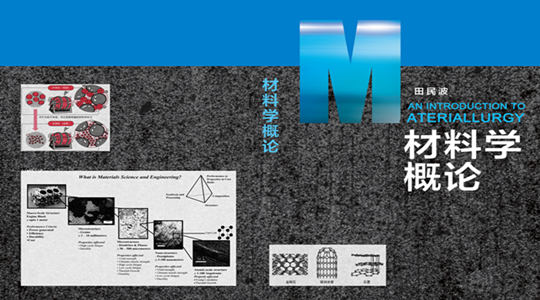
当前课程知识点:Shadow Play—Seeking the Lost Shadow of China(皮影戏) > Course questions > Course questions > 1.3.The artistic form of shadow play
返回《Shadow Play—Seeking the Lost Shadow of China(皮影戏)》慕课在线视频课程列表
返回《Shadow Play—Seeking the Lost Shadow of China(皮影戏)》慕课在线视频列表
There is a popular phrase originated from Japanese called "two-dimensional (2D) culture",
to which many young people are addicted.
What I'm about to mention today is also a kind of 2D culture.
Also in the 2D space,
it shows endless charm,
and has moved countless people from civilians to generals and ministers.
Ethereal and mysterious,
it tells touching stories with distinct characters,
vivid performance and appealing style.
I think it is and demonstrates the 2D world of China for thousands of years.
Yes, as you can guess,
it is Chinese shadow play.
Hello everyone!
I'm Pan Jun from South-Central University for Nationalities.
In the following curriculum,
I will lead you to find the lost shadow of China and we'll explore the development path
and creation characteristics
of shadow play to reveal the spiritual home of the traditional Chinese from which it is inseparable,
yet seemingly remote.
In the Southern Song Dynasty,
shadow play became more popular.
In addition to the "Huige Club",
an industry organization that specializes in sculpting shadow puppets and performing the play,
the first professional shadow play artists with family inheritance emerged,
which lays the foundation for the formation of traditional shadow play heritage.
At this time,
the performance skills were excellent and sophistic.
Chapter II Development of Yuan Opera and Spread of Shadow Play to the World
The repertoire and forms of shadow play were enriched with the development of Yuan Opera in the Yuan Dynasty.
Its destiny diverged there.
On the one hand,
under Yuan rule,
the people had no means to live due to frequent wars,
and civilian activities such as shadow play were strictly restricted for fear of the Han people's association and rebellion.
On the other hand,
it was spread to Persia,
Egypt and other Arab countries and later to places like Turkey as a popular form of entertainment in the court
and the army during the invasion of Genghis Khan's army to Europe and Central Asia.
Gradually, traditional Chinese shadow play spread worldwide.
Chapter IV Peak Period
The shadow play flourished in the Ming Dynasty.
Professional scripts and performance venues gradually emerged,
and schools of different regions were formed.
There were generally three regional schools:
the northern shadow play centered on Luanzhou shadow play,
the western shadow play centered on Shaanxi shadow play,
and the central and southern shadow play represented by shadow play in Jiangsu, Zhejiang and Huguang.
These schools expanded from the Central Plains.
Wherever the shadow play spread,
it adapted to the local people and was closely integrated with local dialects,
slang and folk culture,
gradually forming own characteristics.
I'll analyze and explain this part in detail in the next class.
After the Qing Dynasty settled in Beijing as the capital,
the shadow play of Manchu flowed into Beijing.
Most of the Manchu princes and nobles had boxes for shadow play themselves and private shadow play troupes.
In the mid-Qing Dynasty,
shadow play developed unprecedentedly in the capital.
Many princes would buy boxes for shadow play regardless of the costs
and raising private shadow play troupes at the time had become a fashion.
On festivals and red-letter days,
shadow play was usually performed in the backyards for the princess and princes to watch.
The prosperity of shadow play in the Qing Dynasty was inseparable
from the keen interest of noble families in raising shadow play troupes for entertainment.
In the Jiaqing period,
to prevent people from gathering to make trouble,
the government banned the shadow play
and arrested shadow play artists
on the charge of "Xuandeng (lantern hanging) Bandits " while suppressing the "White Lotus Society".
But these did not prevent the development of shadow play among folks.
The expansion of the territory of the Qing Dynasty promoted the economic and cultural exchanges among all ethnic groups.
Consequently, the shadow play spread to some remote provinces,
and in the Kangxi-Qianlong period,
shadow play gradually spread to Gansu, Qinghai, Sichuan and other places.
In the meantime, the three major regional schools in the Ming Dynasty also flourished in various places.
Folk troupes have sprung up like mushrooms.
Shadow play artists scrambled to contest in their skills,
pushing the shadow play nationwide to its peak.
Chapter V Development in Modern Times
The shadow play was not only popular among the masses,
but also the simplest and easiest to be performed in the countryside,
so it had firmly occupied a position in the field of folk cultural entertainment for a long time.
In the early years of the Republic of China,
the shadow play continued to flourish throughout the country as it was in the late Qing Dynasty.
Although the country was in turmoil at this time,
it did not produce profound changes in the social life of the vast rural areas.
However, there was a recession in social economy due to successive years of military disasters,
continuous famines and deserted lands,
especially during the Anti-Japanese War.
The performance activities were declining day by day,
whether they are private shadow play troupes of the rich and powerful families or civil shadow play troupes for self-entertainment.
The Chinese shadow play began to fall into a sudden depression and gradually declined.
During the Anti-Japanese War,
the country was defeated and the home was lost.
The anti-Japanese forces in East Hebei
and the Northern Shaanxi Revolutionary Base established the Anti-Japanese Shadow Play Club to cooperate
in the propaganda of the Anti-Japanese War,
driving a group of shadow play troupes to serve for the propaganda of the Anti-Japanese War.
After the founding of New China,
China's politics, economy and culture have undergone great changes.
As a result, traditional folk culture has been respected and protected
and the shadow play across the country have also been well inherited and developed in the new historical period.
In Hebei, Hunan, Heilongjiang, Guangdong, Shanxi, Shaanxi, southern Liaoning and other places where shadow play was active,
shadow play troupes were successively organized.
Shadow play artists were inspired,
and they actively transformed traditional repertoire,
rehearsed new repertoire adapted to the times,
and carried out many performance activities.
However, during the "Cultural Revolution" period,
shadow play was categorized in the "Four Olds".
The shadow play and shadow play artists were in distress again.
Chapter VII Current Development Condition
In recent years,
the state has attached great importance to the protection of intangible cultural heritage.
With the approval of the State Council,
the shadow play was included in the first batch of national intangible cultural heritage list on May 20, 2006.
The Chinese shadow play was included in the "Representative List of the Intangible Cultural Heritage of Humanity" by UNESCO in 2011.
However, the current situation of shadow play is not optimistic.
The production and performance artists are very old now,
and this superb skill is about to be lost.
The shadow play has gone down considerably in people's heart due to more and more ways of entertainment nowadays.
Folk culture including shadow play has attracted much attention since the 21st century,
but this slow-paced art has suffered a heavy blow from the economic globalization.
China's shadow play is an intellectual achievement of the working people for thousands of years and a valuable asset of China.
It is also a living fossil of a world cultural heritage as it has gathered the passion and hard work of generations of shadow play artists.
How can we save this brilliant art and vitalize it is an important question we need to think about.
-1.1.The origin and the development of shadow play
-1.2.The spreading and the refulgence of shadow play
-1.3.The artistic form of shadow play
-1.4.Shadow player: the characters in shadow play
-1.5.Shadow play characters and their head parts
-1.6.Decoration and environment props in shadow play
-1.7.The singing tune in shadow play
-2.1.Introducing shadow play workshop
-3.1.Shadow play in northern China
-3.2.Shadow play in western China
-3.3.Shadow play in southern China
-3.4.Shadow play in Yunmeng county of Hubei province
-3.6.Shadow play in Central China
-5.1.Character design 1: Handsome Sheng characters
-5.2.Character design 2: Brawny Sheng characters
-5.3.Character design 3: Cartoonic Sheng characters
-6.1.Character design 4: Elegant Dan characters
-6.2.Character design 5: Gorgeous Dan characters
-6.3.Character design 6: Charming Dan characters
-7.1.Character design 7: Domineering Jing characters
-7.2.Character design 8: Reckless Jing characters
-7.3.Character design 9: Crude Jing characters
-8.1.Character design 10: Funny Chou characters
-8.2.Character design 11: Shrewish Chou characters
-8.3.Character design 12: Chou characters in contemporary context
-Course questions




